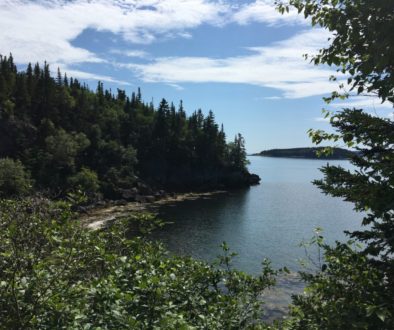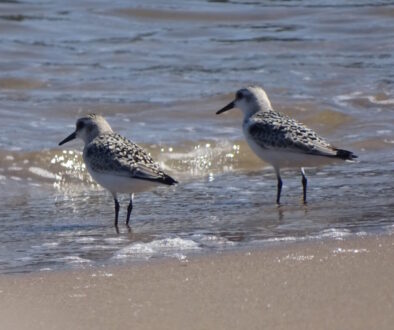Canadian wildlife need big connected parks or species will disappear
Review of Parks says New Brunswick Parks Too Small to Do it Alone
Fredericton – The health of wildlife and biodiversity is uneven in Canada’s national and provincial parks, says a new report prepared by the Canadian Parks and Wilderness Society (CPAWS).
In some cases, species are at risk of dying out and biodiversity is faltering because habitat has not been adequately protected. In others, good progress has been made to protect wildlife.
The review “How is Wildlife faring in Canada’s Parks?” makes the case that parks are a cornerstone of Canada’s efforts to protect biodiversity – the variety of flora and fauna that make up an ecosystem. However, it notes that bigger, better managed parks, and more of them, are needed if parks are to fulfill their critical role in protecting Canada’s wildlife.
CPAWS prepared its third annual review of parks to mark Canada’s Parks Day, July 17. The organization focused on biodiversity this year because the United Nations has declared 2010 the International Year of Biodiversity.
“This report underscores that one of the best ways to protect biodiversity and wildlife is to strengthen our parks system,” says Éric Hébert-Daly, Executive Director of CPAWS.
New Brunswick Parks Need Improved Conservation and Help from Surrounding Lands
The report notes that there are serious concerns in New Brunswick for wildlife such as American marten, a member of the weasel family that needs habitats found in old forests.
Roberta Clowater, Executive Director of CPAWS New Brunswick, says, “Conservation experts agree that New Brunswick parks, even Mount Carleton Provincial Park and Fundy National Park, are too small to do the job alone for conservation of wildlife such as the marten. This puts even more pressure on our parks to be managed to the highest conservation standards. CPAWS is recommending that our outdated provincial Parks Actbe updated to require conservation plans that will sustain habitat for marten and other wildlife.”
Clowater adds, “New Brunswick’s parks are so few and far between it is becoming difficult to have any confidence we can conserve our native wildlife. Since the New Brunswick government has decided to reduce the amount of old forests conserved on public lands, it is even more critical that we expand permanent protection around our largest parks, like Fundy National Park.”
Encouraging moves to protect biodiversity
The report praises government efforts over the past year to create new parks. Particularly noteworthy is the establishment of Gwaii Haanas National Marine Conservation Area off the coast of British Columbia
CPAWS also welcomes government decisions to create parks on Sable Island, Nova Scotia, and in the Mealy Mountains of Newfoundland and Labrador. The Mealy Mountains is exceptional because the park will protect most of the range of a threatened herd of woodland caribou.
Large parks protect species
There are 500 species in Canada at risk of extinction and more at-risk species are identified every year.
“In Canada we have one of the best opportunities left in the world to create big parks that can protect wildlife that need large areas of wilderness to survive – before those species get in trouble,” Mr. Hébert-Daly points out.
CPAWS prescribes a range of measures, including:
• Creating new parks and expanding existing park boundaries;
• Maintaining and restoring wildlife movement corridors (so that wildlife have the large ranges they often need);
• Restricting roads and other damaging developments;
• Limiting recreational activities; and
• Practicing good park management that focuses on healthy ecosystems as a first priority.
Species struggle without adequate parks, good management
Among the good news stories highlighted in the report, where parks help protect vulnerable species, are the Ipswich savannah sparrow of Sable Island, the black dogfish of the Laurentian Channel of the Gulf of St. Lawrence, and the eastern wolf of Algonquin Park.
Sadly, some wildlife face an uncertain future, despite at least partly living in parks. They include the little brown bat in the Fisher Bay area of Lake Winnipeg, Manitoba, the northern gannet, of Atlantic Canada, and New Brunswick’s American marten.
“In this International Year of Biodiversity, it is especially important that we focus on the role of Canada’s parks in keeping our wildlife healthy,” Mr. Hébert-Daly says.


